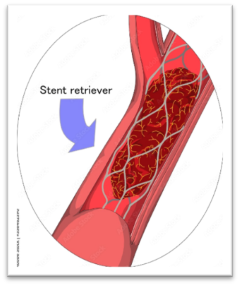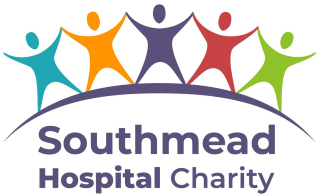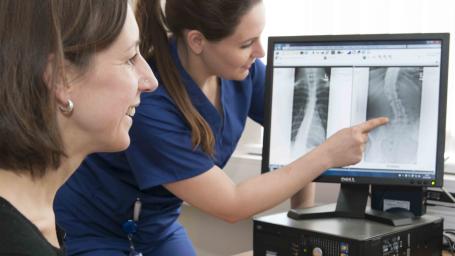Key points
- A miscarriage is the early loss of a pregnancy.
- Recurrent miscarriage is when this happens three or more times.
- Around 1% of women have recurrent miscarriages.
- Most couples who have had recurrent miscarriages still have a good chance of a successful pregnancy in the future.
- If you have had recurrent miscarriages, you may be offered blood tests and a pelvic ultrasound scan to try and identify the reason for them.
- Despite careful investigations, it is often not possible to find a reason for recurrent miscarriage.
- Your doctors will not be able to tell you for certain what the outcome will be if you become pregnant again.
About this information
This information is for women and couples who have had three or more miscarriages. It is based on the Royal College of Obstetricians and Gynaecologists (RCOG) guidance, last reviewed in 2011. It explains:
- Some of the known reasons for recurrent miscarriage;
- The most effective ways of investigating and treating women who have experienced recurrent miscarriages.
National guidance aims to help you and your healthcare team make the best decisions about your care. It is not meant to replace advice from a doctor or midwife about your own situation.
This guidance does not look at reasons or treatment for a single miscarriage.
What is recurrent miscarriage?
A miscarriage is the loss of a pregnancy at some point during the first 23 weeks. There is a 10 - 15% chance of miscarriage with any pregnancy, and most miscarriages occur within the first 12 weeks.
Recurrent miscarriage is when three or more pregnancies end in miscarriage. 1% of couples who are trying to conceive have recurrent miscarriages, and for women and their partners it can be an incredibly distressing situation.
For some women experiencing recurrent miscarriage, there is a specific reason for their losses. For others, however, their repeated miscarriages may be due to chance alone.
For around half of women who have recurrent miscarriages, no underlying cause is found.
What are the reasons for recurrent miscarriage?
A number of factors may play a part in recurrent miscarriage. It is a complicated problem and more research is still needed.
Abnormalities in the embryo
An embryo is a fertilised egg. An abnormality in the embryo is the most common reason for single miscarriages. However, the more miscarriages you have, the less likely this is to be the cause of them.
Your age and past pregnancies
The older you are when you become pregnant, the greater your risk of having an abnormality in the embryo and therefore the greater your chance of having a miscarriage.
Having multiple miscarriages in the past may also increase the likelihood of having another one.
Lifestyle factors and weight
Smoking, excessive alcohol or caffeine intake, and having a body mass index (BMI) above 25 are all associated with increased risk of miscarriage, and may therefore be a factor in recurrent miscarriage for some women.
Genetic factors
For around 3 - 5% of women who have recurrent miscarriages, they or their partner have an abnormality in one of their chromosomes (the structures within our cells that contain our DNA and therefore determine the genetic features we inherit from our parents).
Although such abnormalities may cause no problem for you or your partner, they may sometimes cause problems if passed on to your baby, and therefore be a reason for recurrent miscarriage.
Autoimmune factors
Antibodies are substances produced in our blood in order to fight off infection. Some people produce antibodies that react against the body’s own tissues; this is known as an autoimmune response.
Antiphospholipid antibodies (aPL) are an example of antibodies that react against the body’s own tissue and are strongly associated with recurrent miscarriage.
About 15% of women who have had recurrent miscarriages have antiphospholipid antibodies in their blood, compared to fewer than 2% of women who have normal pregnancies. If you have antiphospholipid antibodies and a history of recurrent miscarriage, your chances of a successful pregnancy may be reduced.
Abnormalities in womb structure
It is not clear how far major irregularities in the structure of your womb can affect the risk of recurrent miscarriage. Women with serious anatomical abnormalities affecting their womb, and who do not have treatment for them, appear to have a higher risk of miscarrying or giving birth early.
Minor variations in the structure of your womb do not cause miscarriage.
Weak cervix
In some women, the entrance to the womb (the cervix) opens too early in the pregnancy and results in a miscarriage. This is known as a weak cervix, and is only recognised as a possible cause of miscarriage in the second and third trimester (from 13 weeks onwards).
Polycystic ovary syndrome
Polycystic ovary syndrome (PCOS) is a common condition in which an imbalance of hormones causes symptoms including irregular or absent periods, or changes in aspects of your appearance.
It is sometimes, but not always, associated with ovaries that appear larger than normal on an ultrasound scan and have more follicles (fluid filled spaces containing developing eggs) than normal ovaries. Having polycystic ovaries on an ultrasound scan does not necessarily mean you have PCOS, and not all women with PCOS have polycystic ovaries.
Having a diagnosis of PCOS has been linked with having an increased chance of miscarriage, however the exact association with recurrent miscarriage isn’t clear.
Diabetes and thyroid problems
Diabetes or thyroid disorders can be factors in single miscarriages. They do not cause recurrent miscarriage, as long as they are treated and kept well controlled.
What can be done to investigate and treat recurrent miscarriage?
Supportive pregnancy care
Women who have supportive care from the beginning of a pregnancy have a better chance of a successful birth.
There is some evidence that being under the care of a dedicated recurrent miscarriage service can reduce the risk of further miscarriage.
Blood tests
Hormone levels on day 2 - 3 of your first period after your most recent miscarriage may be measured. If this falls at a weekend, please attend the early pregnancy clinic (EPC) after the weekend, as these blood tests can be taken on day 1 - 5 of your period.
Other blood tests are carried out 6 weeks after your most recent miscarriage.
Hormone treatment
It has been suggested that taking progesterone early in pregnancy could help prevent a miscarriage. This may be offered to you in the recurrent miscarriage clinic depending on the results of your tests.
Treatment for antiphospholipid antibodies
There is some evidence that if you have aPL antibodies and a history of recurrent miscarriages, treatment with low-dose aspirin tablets and low-dose heparin injections (blood thinner) in the early part of your pregnancy may improve your chances of a live birth.
Screening for abnormalities in the embryo
If you have a history of recurrent miscarriage and you lose your next pregnancy, your doctors or the early pregnancy clinic may suggest checking for abnormalities in the embryo or the placenta afterwards.
They will do this by checking the chromosomes of the embryo through a process called karyotyping (although it is not always possible to get a result). They may also examine the placenta through a microscope.
The results of these tests may help them to identify and discuss with you your possible choices and treatment.
Screening for abnormalities in the structure of your womb
You will be offered a pelvic ultrasound scan to check for and assess any abnormalities in the structure of your womb, so that they can be treated if necessary.
Tests and treatment for a weak cervix
If there is a suspicion of a weak cervix based on your previous pregnancy history, you will be referred to the preterm labour clinic.
At the clinic, scans of your cervix will be undertaken in the second trimester of your pregnancy, and treatment may be offered if a weak cervix is confirmed.
Immunotherapy
Treatment to prevent or change the response of the immune system (known as immunotherapy) is not routinely recommended for women with recurrent miscarriage. It has not been proven to work, does not improve the chances of a live birth and can be associated with certain risks.
What could it mean for me in future?
Your doctors will not be able to tell you for sure what will happen if you become pregnant again.
However, even if they have not found a definite reason for your miscarriages, you still have a good chance (75%) of a healthy birth.
What to expect following a referral to the recurrent miscarriage clinic
- Whilst you are waiting for your first appointment in the recurrent miscarriage clinic, you are advised to avoid pregnancy if possible.
- It will not be possible to offer any additional treatment, scans or advice beyond routine pregnancy and miscarriage care, if you do become pregnant before being seen.
- When you come to the clinic, your investigations and possible treatment options will be discussed.
- After you have been seen, you may be offered any necessary treatment as well as repeat reassurance scans during the first trimester of future pregnancies, as part of your ongoing care.
Further information and support
You can find more information and support around recurrent miscarriage through the following organisations.
Tommy’s foundation
www.tommys.org/baby-loss-support/miscarriage-information-and-support/recurrent-miscarriage
Miscarriage association
www.miscarriageassociation.org.uk/information/miscarriage/recurrent-miscarriage
How to contact us
Early Pregnancy Clinic
0117 414 6778
www.nbt.nhs.uk/epac





